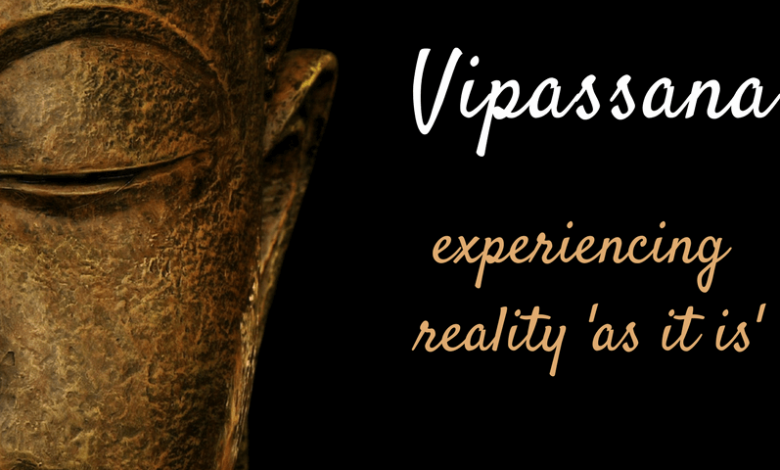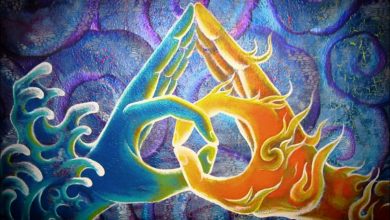
To See Things As They Really Are
Vipassana meditation is the name of the non-ego state of consciousness experienced when we are not in the waking state. Vipassana meditation is often practised as a gateway to insight meditation and enlightenment. Vipassana is literally the “meditation of concentration” and the word Vipassana comes from the word “Vitamins”, which means “enzymes”. Therefore, Vipassana is basically the study of “encephalogy” or the verbal analogies or representations of experience.
Vipassana is practised with the assistance of a teacher who has an open mind and he facilitates the method of meditation based on an attention-based model, in order to induce as much of our own creative potential as possible. Basically, in Vipassana, we learn to concentrate, using all of our senses as we focus around us. We are taught to notice and accept everything that surrounds us, without judging, complaining, trying to change anything in the universe or attempting to influence anyone else. The training precepts are around us in this deep, calm and luminous awareness.
Most people can readily comprehend the basic concepts behind this technique. It is done with an open mind and we are more aware of the surrounding sensations. This helps clear the channels of energy along which our thoughts operate. When we realize that all of us have feelings, thoughts and sensations that occur around us we can begin to accept them as they really are, without trying to change them or use our power over them to control their outcome. When we do this we become more like an ‘I’. This happens because we stop operating from a “you” that refers to our habitual mind operating from a false belief system and start functioning from a tree’.
This process of emptying and quieting creates an environment of empowerment. The ultimate goal of Vipassana meditation is to experience a state of full awareness in which we can clearly see all that there is to experience and understand, without limiting our perceptions by believing something is true when it is not. This is achieved through controlled breathing techniques that gradually deepen and expand consciousness until it reaches a point where the sensations of the present moment no longer contain unwanted thoughts and feelings. Once this stage is reached the meditator then moves into Samatha meditation which is basically a spiritual form of yoga focused on achieving self-awareness.
Samatha meditation is an ideal method for developing self-awareness and is commonly practised with vipassana meditation. Practised regularly, both together and separately, both of these techniques will lead to increased levels of insight and awareness. In the practice of every part of the body, we train the mind to be aware of each and every part of the body. We train the mind to observe all sensations and feelings as they arise without discriminating or trying to get rid of them.
Vipassana and Samatha Meditation - An Insight Into Their Influence on Modern Meditation
Samatha meditation means “the noble way” and Vipassana literally means “visit the noble Way.” This tradition originated in India and was first translated into English by the Buddhist monk Thomas Merton in the 1920s. In the suit, Buddha teaches his disciples not to get entrapped by desires (tantra). Instead, they should look within, realizing that all desires are born of ignorance (Views) and not of true understanding (Dhamma). This is a basic tenet of the Buddhist tradition and one of the most significant insights into achieving true wisdom.
Vipassana and Samatha meditation allows a person to really get to observe things closely and totally eliminating conditioned reflexes so that they can gain insight into the true nature of reality. By freeing the mind from conditioned reflexes, which causes stress throughout a person’s daily life, the results can be an absence of disease, good things will just seem to happen more often, and suffering will simply stop. Vipassana and Samatha retreats can help a person reach this state and once there, they can experience things like no other.
When we use this kind of mindful conduct, we find that we are more able to maintain what we have and make it flow smoothly rather than constantly being in search of what we think we want and need. It leads to increased feelings of wellness, contentment and vibrancy in life and this eventually leads to emotional balance. The result is a stronger sense of self-confidence, increases happiness, vitality and inner peace.
To achieve inner transformation through meditation, we must first be able to see things clearly and be able to control our thoughts and emotions. When this is possible, the kind of emotions we are feeling is transformed into positive ones. Vipassana is a powerful method for achieving self-realization through mindful meditation. It can change one’s life and the way they see things around them.
Vipassana is a very powerful insight meditation practised in a spirit of compassion for ourselves and others. It is also practised to benefit those who practice it, especially people who would like to live a life free from worldly conflict and suffering. A devotee of vipassana meditation regularly achieves enlightenment while meditating. These teachings are very simple, but they do have a powerful influence on the modern world.




